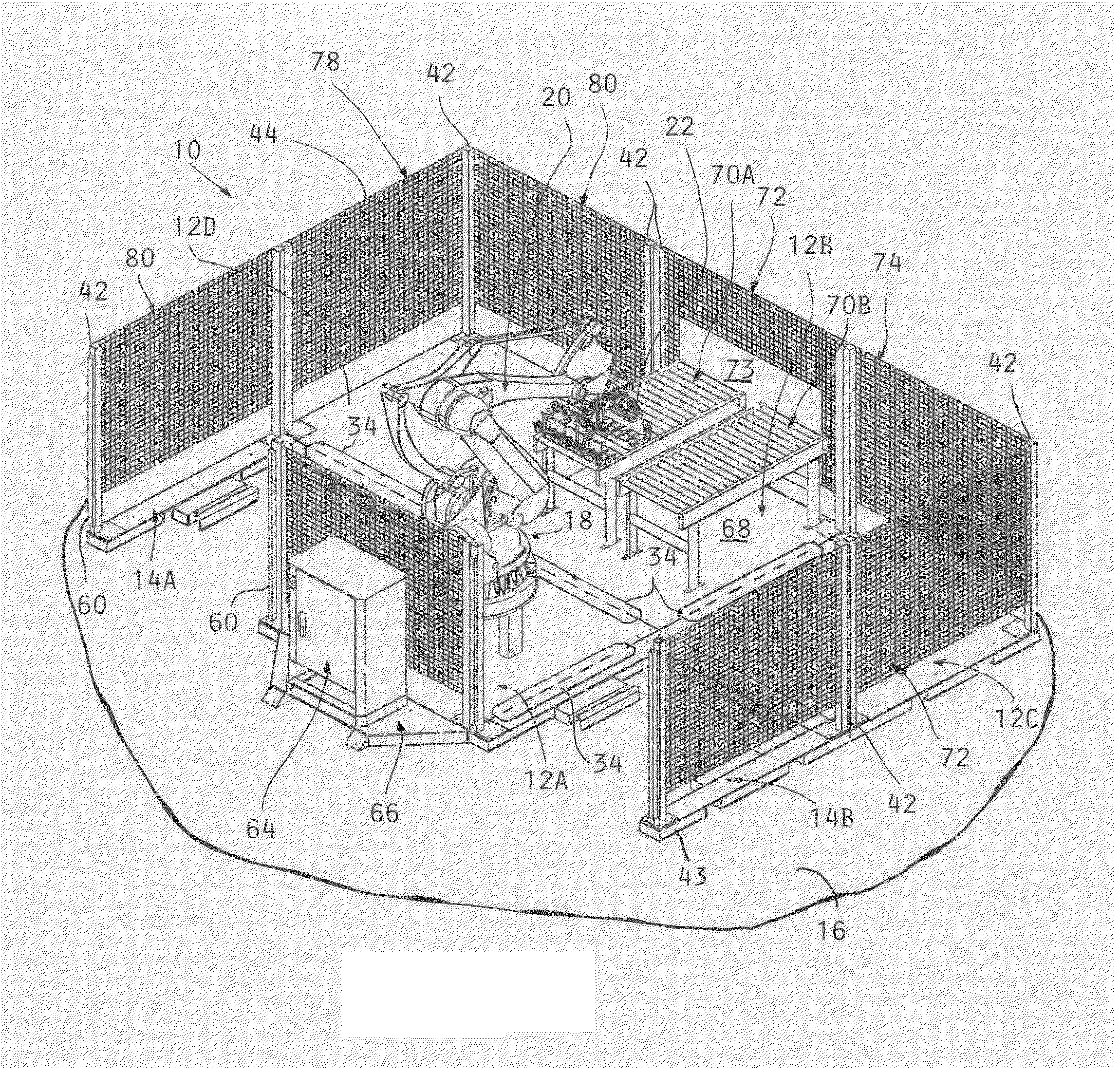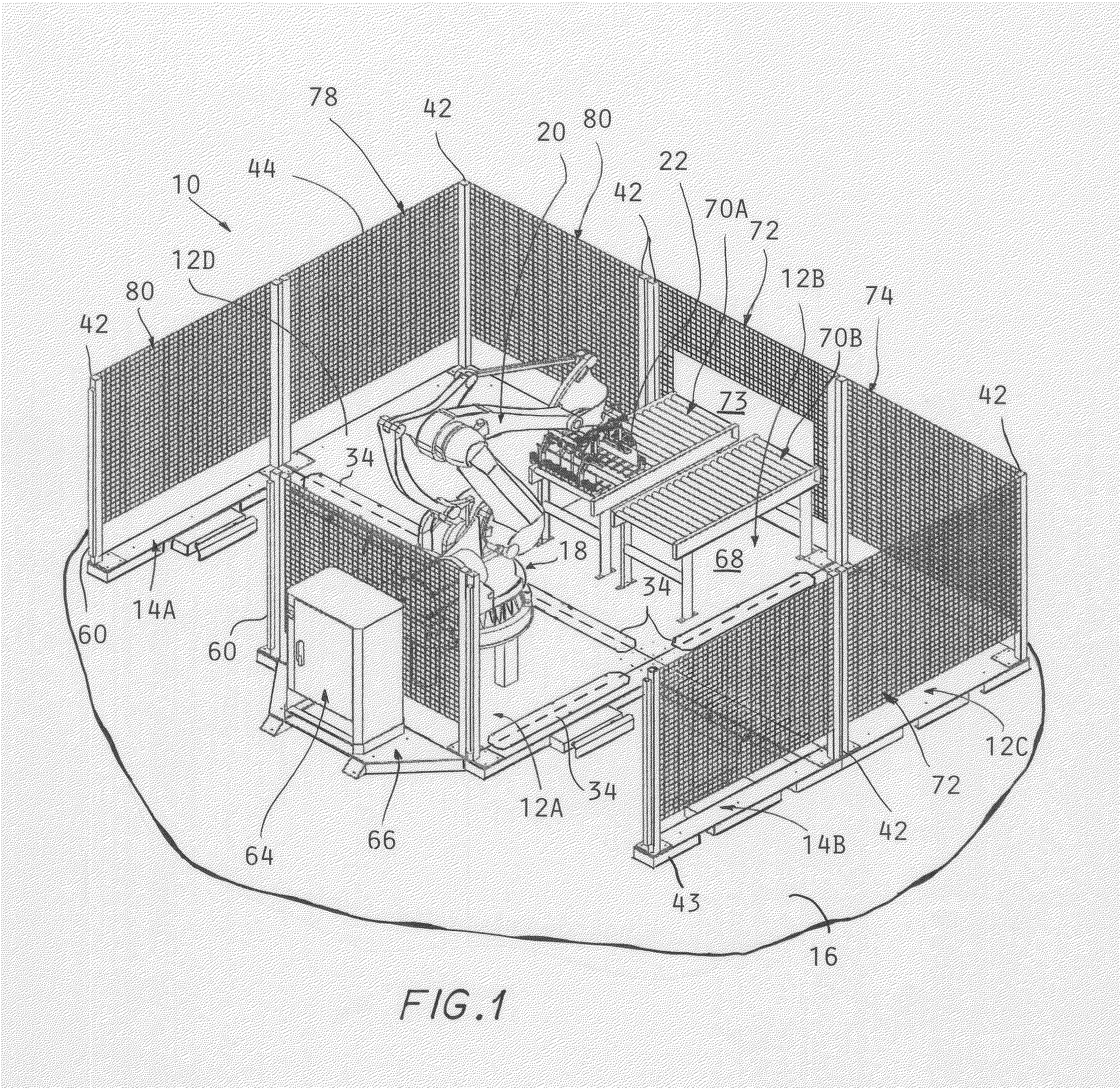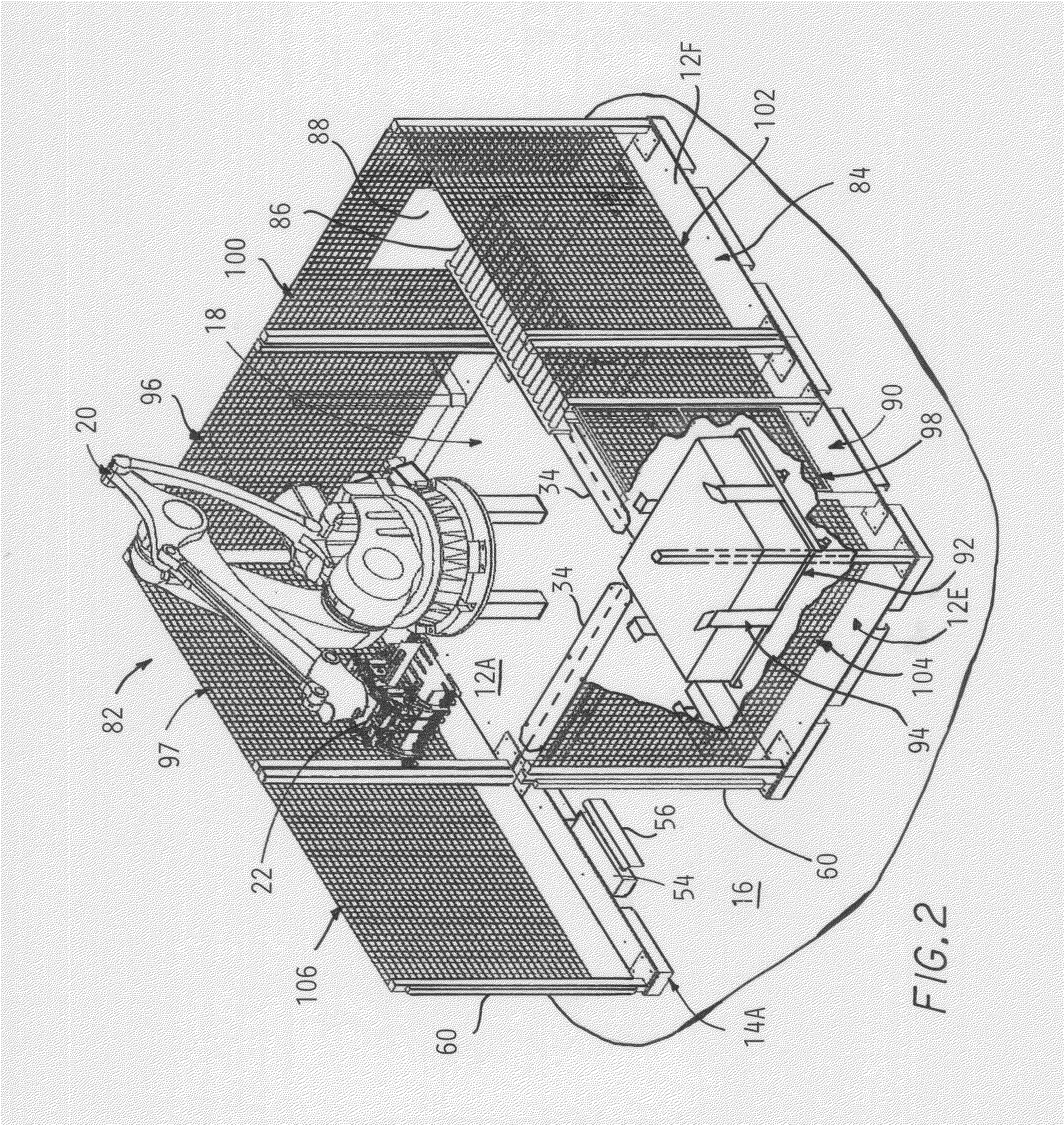Robotic Palletizer Cell And Method Of Construction
a robot and palletizer technology, applied in the field of robot palletizer cells, can solve the problems of lack of adaptability to particular applications, lack of flexibility, and inability to be configured differently
- Summary
- Abstract
- Description
- Claims
- Application Information
AI Technical Summary
Benefits of technology
Problems solved by technology
Method used
Image
Examples
Embodiment Construction
[0031]In the following detailed description, certain specific terminology will be employed for the sake of clarity and a particular embodiment described in accordance with the requirements of 35 USC 112, but it is to be understood that the same is not intended to be limiting and should not be so construed inasmuch as the invention is capable of taking many forms and variations within the scope of the appended claims.
[0032]Referring to the drawings, and particularly FIG. 1, a palletizer cell 10 is shown, constructed using components according to the present invention. This includes a plurality of rectangular, preferably square, platform bases of two different types, i.e., four solid square platform bases 12A, 12B, 12C, and 12D, and two platform bases 14A, 14B of an overall square configuration but having an opening extending in from one side to create a general U-shape.
[0033]All of the platform bases 12A-12D and 14A, 14B rest on the factory floor 16, held together in contact with one...
PUM
 Login to View More
Login to View More Abstract
Description
Claims
Application Information
 Login to View More
Login to View More - R&D
- Intellectual Property
- Life Sciences
- Materials
- Tech Scout
- Unparalleled Data Quality
- Higher Quality Content
- 60% Fewer Hallucinations
Browse by: Latest US Patents, China's latest patents, Technical Efficacy Thesaurus, Application Domain, Technology Topic, Popular Technical Reports.
© 2025 PatSnap. All rights reserved.Legal|Privacy policy|Modern Slavery Act Transparency Statement|Sitemap|About US| Contact US: help@patsnap.com



